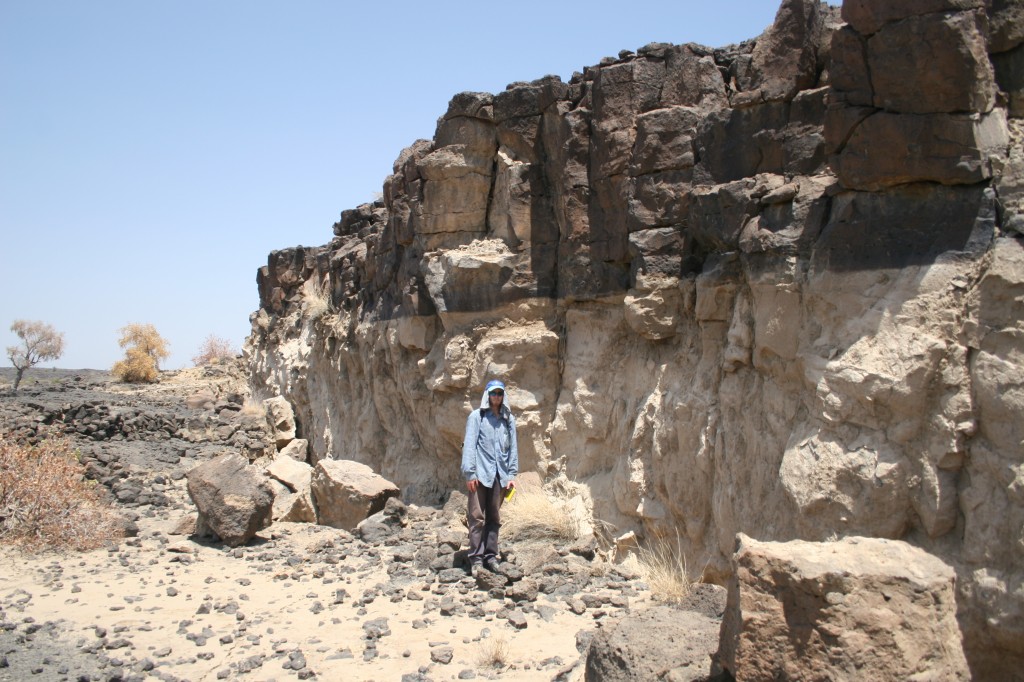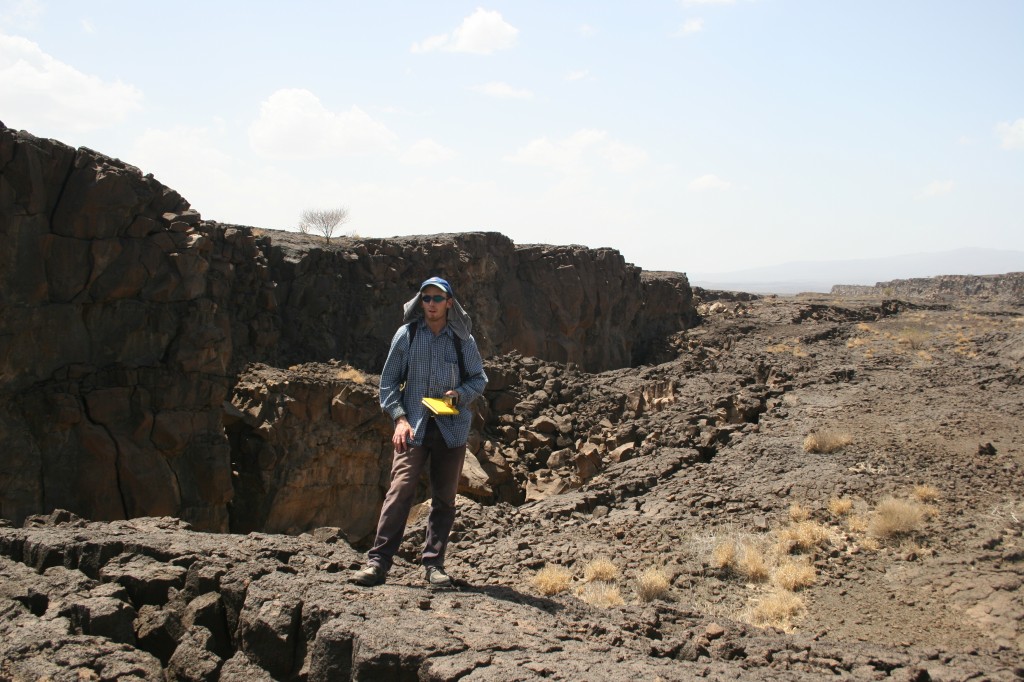The highlight of this year’s British Geophysical Association (BGA) Postgraduate Research in Progress meeting, hosted by the University of Cambridge, was undoubtedly the annual Bullerwell Lecture. The 2013 Bullerwell Lectureship (presented each year by the Royal Astronomical Society to ‘an outstanding, young British Geophysicist’) was awarded to Dr. Derek Keir, lecturer in Earth Science at the University of Southampton. Derek chose to present on Magmatism and deformation during continental breakup, focusing on the work he and his collaborators have carried out over the past decade in Ethiopia.
The current President of the BGA, Professor Michael Kendall of the University of Bristol, took time prior to introducing Derek to highlight the contribution to geophysics made by the eponymous William Bullerwell. As Chief Geophysicist of the Institute of Geological Sciences (precursor to the British Geological Survey) he was a strong advocate of utilising geophysical techniques in addressing geological problems, in addition to his strong support for early career researchers. These are two areas in which the BGA continues to invest much time and effort. Professor Kendall’s introduction drew attention to Derek’s impressive publication record in addition to his enthusiasm in addressing rifting in the presence of volcanic activity.
Derek started his lecture with a summary of the end member continental rifting models of mechanical stretching and magma intrusion. The main thrust of the Ethiopian research has been directed at understanding the transition from continental to oceanic rifting. This can be studied in an onshore setting in Ethiopia due to the presence of the Afar Triple Junction between the East African, Red Sea, and Gulf of Aden rifts. The first project in the region that Derek participated in was the EAGLE project, which ran from 2001 – 2003; the aim of this project was to improve our understanding of the younger, less mature Main Ethiopian Rift (MER). This was then followed by the Afar consortium project running from 2007 – 2009 and the Danakil seismic project running from 2009-2012, which focussed on the older, more mature Afar depression. The difference in rifting between these two locations was highlighted by Derek with embryonic continental rifting at the MER in the south gradually becoming incipient seafloor spreading at the Afar depression in the north. The main distinction, excluding the age of rifting, is in the mechanism supporting rifting. During the onset of continental rifting the majority of strain is accommodated by slip along the rift border faults; as rifting continues, the strain is then gradually accommodated by progressively more axial magmatic intrusion until the majority of strain is no longer accommodated by border fault slip. Derek concluded by outlining the need for this improved understanding of continental breakup to be applied to older rifted margins.
Subsequent questions posed by Professor Dan McKenzie FRS (University of Cambridge) sparked a lively debate on parallels between rifting in Iceland and Ethiopia.

